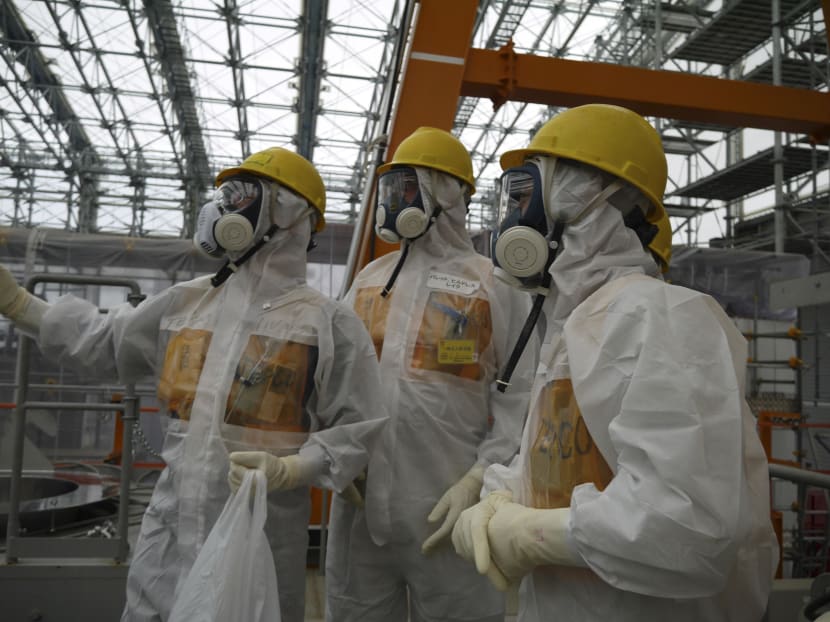Fukushima clean-up complicated, former US regulator says
TOKYO - A former United States nuclear regulator says cleaning up Japan’s wrecked Fukushima plant is a bigger challenge than the work he led at Three Mile Island and that ongoing radioactive water leaks are a minor part of that task.

The operator of the wrecked Fukushima nuclear plant said today it found elevated readings of tritium in groundwater near tanks that are holding hundreds of tonnes of contaminated water at the site. Photo: REUTERS
TOKYO - A former United States nuclear regulator says cleaning up Japan’s wrecked Fukushima plant is a bigger challenge than the work he led at Three Mile Island and that ongoing radioactive water leaks are a minor part of that task.
Mr Lake Barrett was appointed this month by plant operator Tokyo Electric Power Co as an outside adviser for the decades-long decommissioning process. He led the Three Mile Island accident clean-up for nearly a decade as part of the Nuclear Regulatory Commission.
He said that the meltdowns in three of the reactors, massive radiation leaks and the volume of contaminated water at the Fukushima Dai-ichi plant, on Japan’s northeast coast, make it a more complicated clean-up.
“In comparison to Three Mile Island, Fukushima is much more challenging, much more complex a job,” Mr Barrett told a Tokyo news conference.
The 1979 core melt accident at Three Mile Island involved one reactor. All the radioactivity was contained in one building, where 8,000 tons of contaminated water were trapped.
In Fukushima, the catastrophe was precipitated by a massive earthquake and tsunami, whose aftermath are further adding to the difficulties of containing and cleaning up after the meltdowns of the three reactors. Moreover, buildings at the Japanese plant were destroyed or damaged by hydrogen explosions, which released massive radioactive elements into the air and to the sea.
Japanese officials have acknowledged that radioactive ground water has been leaking from the plant since soon after the nuclear disaster. Recent leaks from storage tanks holding radioactive water have added to the concerns.
But despite worries over the massive quantities of water needed to cool the melted reactors, the risk of radiation-contaminated water to public health is minimal, Mr Barrett said.
Improved communication would help calm those fears, which likely persist since huge amounts of radiation-tainted water will have to be released into the Pacific after it is processed to bring it below legal limits.
TEPCO yesterday (Sept 12) acknowledged that samples of underground water from near a tank where a major leak occurred last month showed high levels of radioactive tritium.
Massive amounts of contaminated water - a combination of water leaking from the three damaged reactors and inflows of underground water - have also accumulated inside reactor and turbine basements and threaten to leak into the Pacific.
Hours before the Sept 7 vote by the International Olympic Committee awarded Tokyo the hosting rights for the 2020 games, Prime Minister Shinzo Abe emphatically declared that the leaks were under control.
The government has promised to become more directly involved in the plant’s water management and to fund costly projects to contain the leaks. AP






